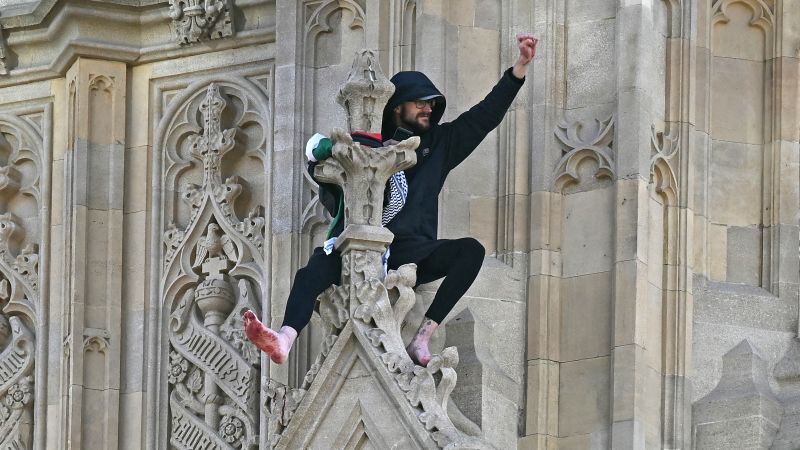Destruction at Asheville’s historic muni golf course; How extensive was damage?

ASHEVILLE – Wrapping two years with its new operators, golfers said the historic Asheville Municipal Golf Course was looking better than it had in a decade. The city was nearing completion on multimillion dollar capital improvements — restoring fairways, bunkers, cart paths and greens across its 18 holes, along with substantial stormwater repairs.
After Tropical Storm Helene lashed Western North Carolina Sept. 27, the Swannanoa River, which runs alongside the course, crested at more than 26 feet, spilling from its banks and engulfing whole areas of the city.
Chris Corl, whose department oversees the course, said the water poured down through the surrounding neighborhood. It geysered up from the inlet drains, hitting walls of floodwater, left with nowhere else to go. The front nine holes were almost completely inundated as stormwater burbled up through the irrigation system, pulling the course apart from below.
When waters receded, it left behind downed trees, debris, powerlines and multiple feet of silt. Improvements to the front nine were largely undone by the storm, Corl said — about one-third to a half of the overall work. The city estimates roughly $7 million in needed repairs.
The course, affectionately known as “Muni,” was designed by Hall of Fame golf architect Donald Ross and opened for play in 1927. It remains the last “affordable” public fee course in Asheville and is home to Skyview Golf Tournament, the longest running professional tournament in the country owned and operated by Black residents, which held its 64th annual tournament in July.
‘Incredible damage’
Corl had a heads up before he surveyed the damage. But it didn’t entirely soften the blow.
“It was a lot worse than I expected, I’ll say that,” Corl said. He is director of the department of Community and Regional Entertainment Facilities, which manages city assets like the Harrah’s Cherokee Center, McCormick Field and the WNC Nature Center.
The back nine escaped the worst of the damage and reopened for play Oct. 28. The view from the lush green of the open holes to the devastation of the front nine is jarring — contrasting sharply with the dusty, tree-strewn desolation beyond.
Phil Miles, 76, a regular Muni golfer who before Helene played weekly, was back at the course for the first time Nov. 7. He was out of town when the storm reached WNC, and said even from afar, watching the devastation was “heartbreaking.”
Back at the Muni, he was left wondering at the “incredible, incredible damage.”
“You couldn’t recognize anything,” he said of his return to the course. “Where the seventh hole used to be, there was nothing.”
Across the Muni’s 122 acres, 103 trees were down, about 4.5% of the total count, many of them large hardwoods, Corl said. A building housing bathrooms near hole five was swept away. The river had picked up cart paths and moved them, creating new channels, dislodging and depositing massive amounts of rock, trees, buildings and earth.
“I know there’s some people who have lost their homes and lost their lives, and that’s certainly a lot worse than just a golf course going. But it’s a place that, basically, we called home,” Miles said. He and friends golfed there every Monday, “and all of sudden, it’s not there anymore.”
Possible debris site?
The damage to the front nine was so extensive, that in October it was approved by the North Carolina Department of Environmental Quality as a temporary debris processing site. Following some pushback from residents, much of it centered around another debris site near the Deaverview public housing complex, the city said the site would be “deactivated,” and only used if needed.
The city has since announced several other debris sites that are being actively utilized. No debris has been brought to the golf course as of Nov. 1, Corl said.
The John B. Lewis Soccer Fields, nearby to the Muni, around another bend of the river, were the hardest hit of Corl’s department’s facilities. The wreckage from nearby homes and businesses, swept away by floodwaters, laid waste to the fields, tearing up the turf and its base and flooding the property’s buildings.
While the nature center, which sits roughly between JLB and the Muni, was not significantly damaged, its main access, a bridge that stretches from Azalea Road across the Swannanoa, was washed out.
Timeline?
There’s no current timeline for repairs to the course after Helen’s damage, Corl said. His department is working with a contractor hired by the city to move through the FEMA process, determine what funding might be available and how to fill any gaps.
To golfers out in the community, he just asks for patience.
“Everyone is asking how soon it is going to be rebuilt, and for now we just don’t know. So patience and grace, like we’re asking for so many different areas of the city right now,” Corl said.
Sarah Honosky is the city government reporter for the Asheville Citizen Times, part of the USA TODAY Network. News Tips? Email shonosky@citizentimes.com or message on Twitter at @slhonosky. Please support local, daily journalism with a subscription to the Citizen Times.
Related
5 Things I Never Play Golf Without: David Dusek
Our 11-handicap equipment writer always brings his favorite divot repair tool, a portable speaker and some high-tech gear to the course.As long as the weather i
Donald Trump’s golf course wrecked by pro-Palestine protesters
Pro-Palestinian protesters have vandalized parts of U.S. President Donald Trump's golf course in Scotland in response to his proposal for the reconstruction of
Man holding Palestinian flag scales London’s Big Ben hours after…
CNN — Emergency services were called to London’s Palace of Westminster on Saturday a
EPD: Drunk driver parked car on golf course
EVANSVILLE, Ind. (WFIE) - Evansville police say they arrested a man after finding him drunk in his car that was parked on a golf course.Officers say they were c











